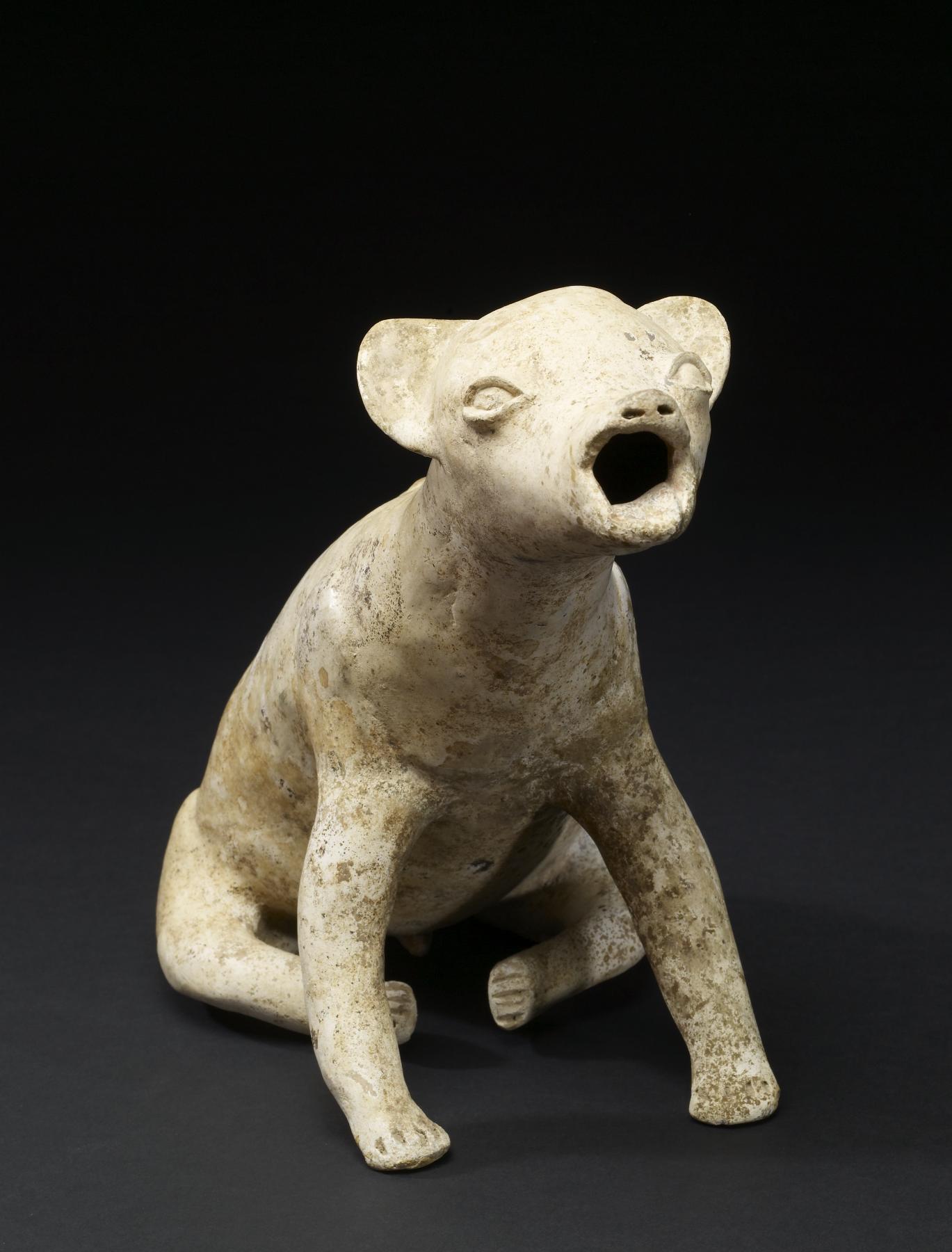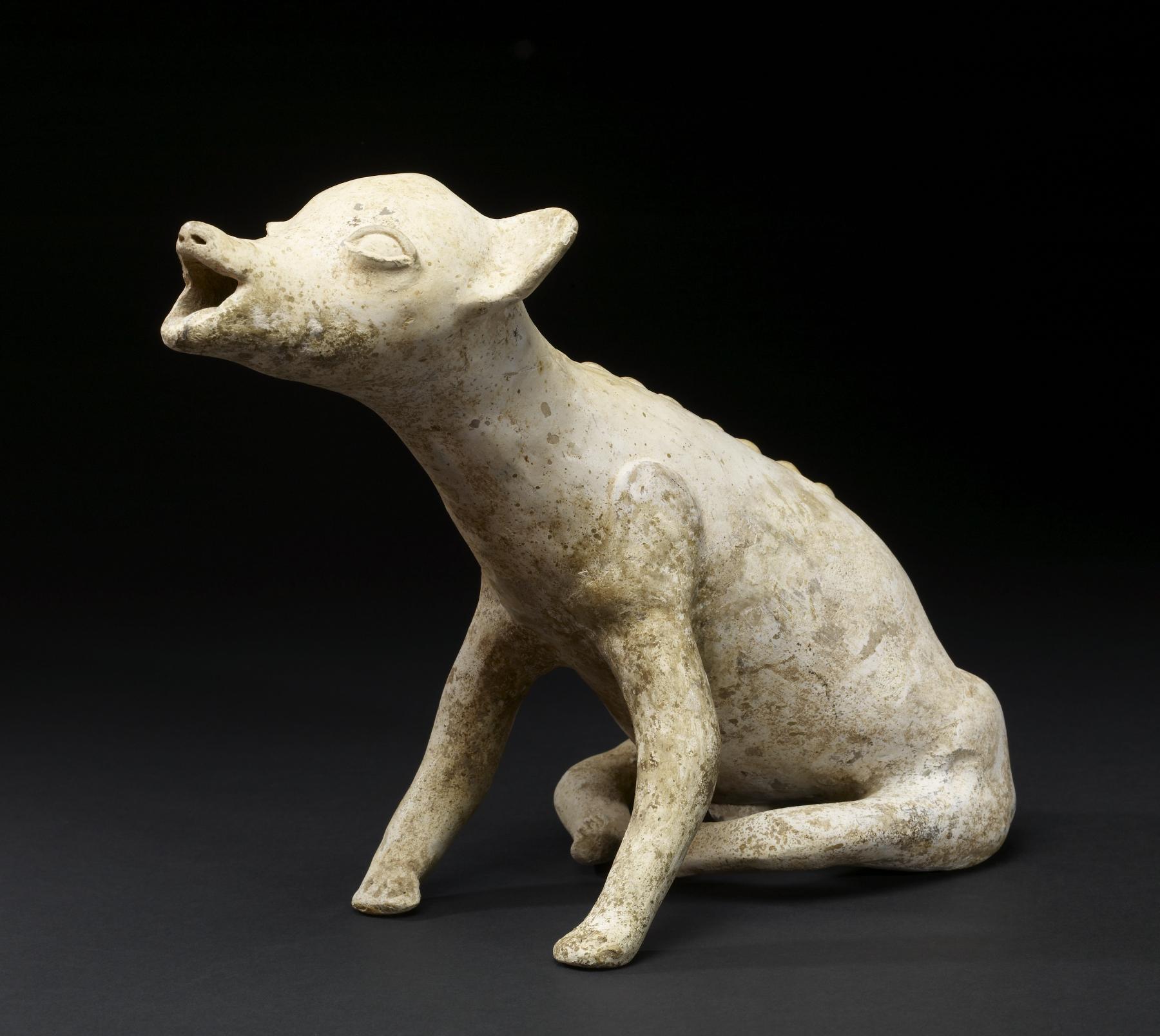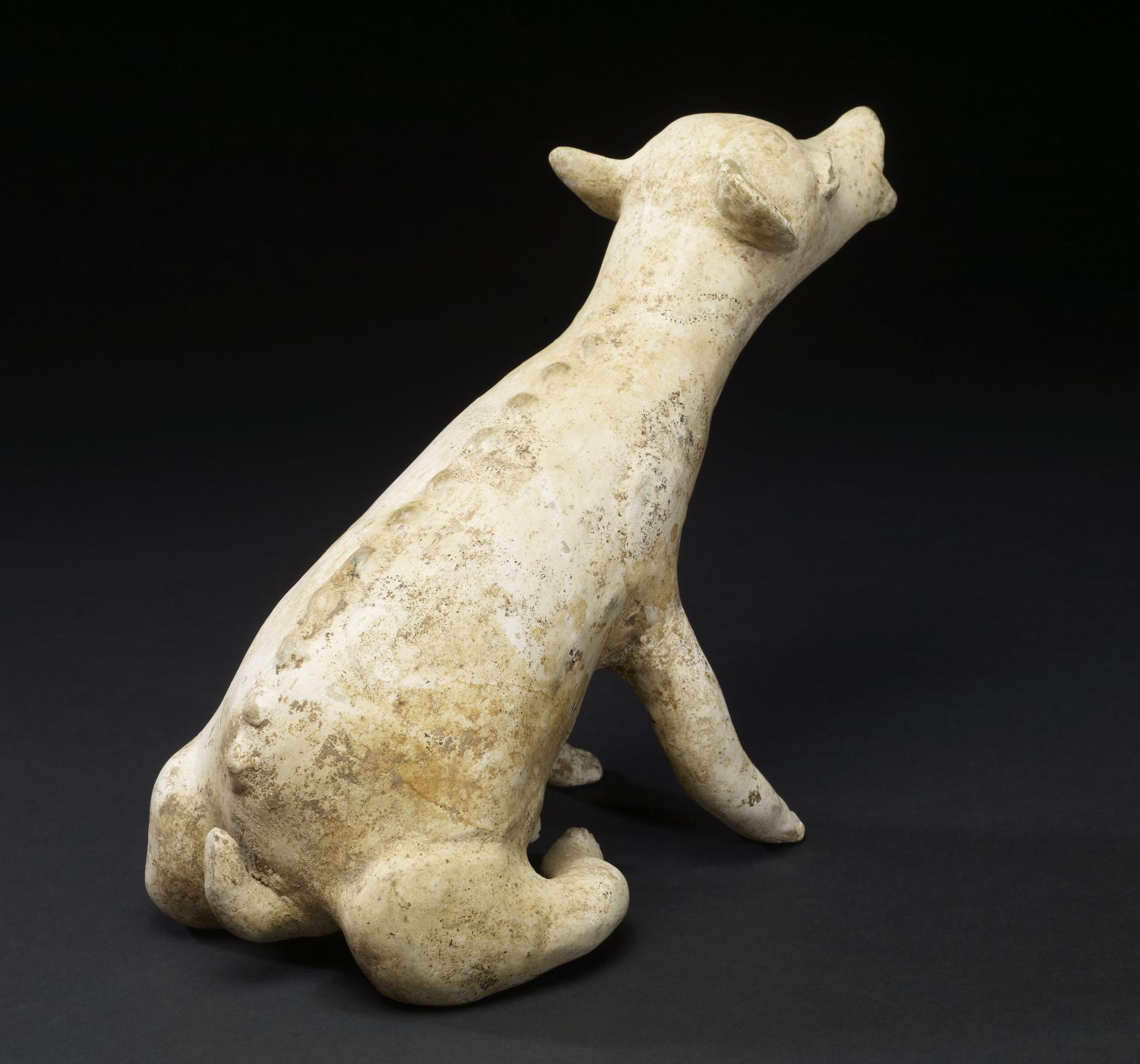Howling Dog Effigy
(Ancient Americas )
Among the Mexica (Aztecs) of highland Mexico, dogs were associated with the deity Xolotl, the god of death. This deity and a dog were believed to lead the soul on its journey to the underworld. The Mexica also associated Xolotl with the planet Venus as the evening star (portrayed with the head of a canine) and the twin brother of the deity Quetzalcóatl, who personified Venus as the morning star. The dog's special relationship with humans is highlighted by a number of Colima dog effigies wearing humanoid masks. This curious effigy type has been interpreted as a shamanic transformation image or as a reference to the modern Huichol myth of the origin of the first wife, who was transformed from a dog into a human. However, recent scholarship suggests a new explanation of these sculptures as the depiction of the animal's tonalli, its inner essence, which is made manifest by being given human form via the mask. The use of the human face to make reference to an object's or animal's inner spirit is found in the artworks of many ancient cultures of the Americas, from the Inuit of Alaska and northern Canada to peoples in Argentina and Chile. The white-slipped dog's elongated body and animated legs capture the effort of a boisterous howl or bark. The slightly raised rear legs suggest that the animal is ready to run after the offending entity that prompted his enmity. The white hue and skinny body might also have underworld connotations, although such an interpretation is not certain in this instance.
Provenance
Provenance (from the French provenir, 'to come from/forth') is the chronology of the ownership, custody, or location of a historical object. Learn more about provenance at the Walters.
Ron Messick Fine Arts, Santa Fe, New Mexico; purchased by John G. Bourne, Santa Fe, New Mexico, 2000; given to Walters Art Museum, 2013.
Exhibitions
| 2012-2013 | Exploring Art of the Ancient Americas: The John Bourne Collection Gift. The Walters Art Museum, Baltimore; Frist Center for the Visual Arts, Nashville. |
Conservation
| Date | Description | Narrative |
|---|---|---|
| 10/25/2011 | Treatment | cleaned; loss compensation |
Geographies
Mexico, Jalisco (Place of Origin)
Measurements
H: 9 7/16 x L: 12 5/8 x W: 5 13/16 in. (24 x 32.1 x 14.8 cm)
Credit Line
Gift of John G. Bourne, 2013
Location in Museum
Not on view
Accession Number
In libraries, galleries, museums, and archives, an accession number is a unique identifier assigned to each object in the collection.
In libraries, galleries, museums, and archives, an accession number is a unique identifier assigned to each object in the collection.
2009.20.148








